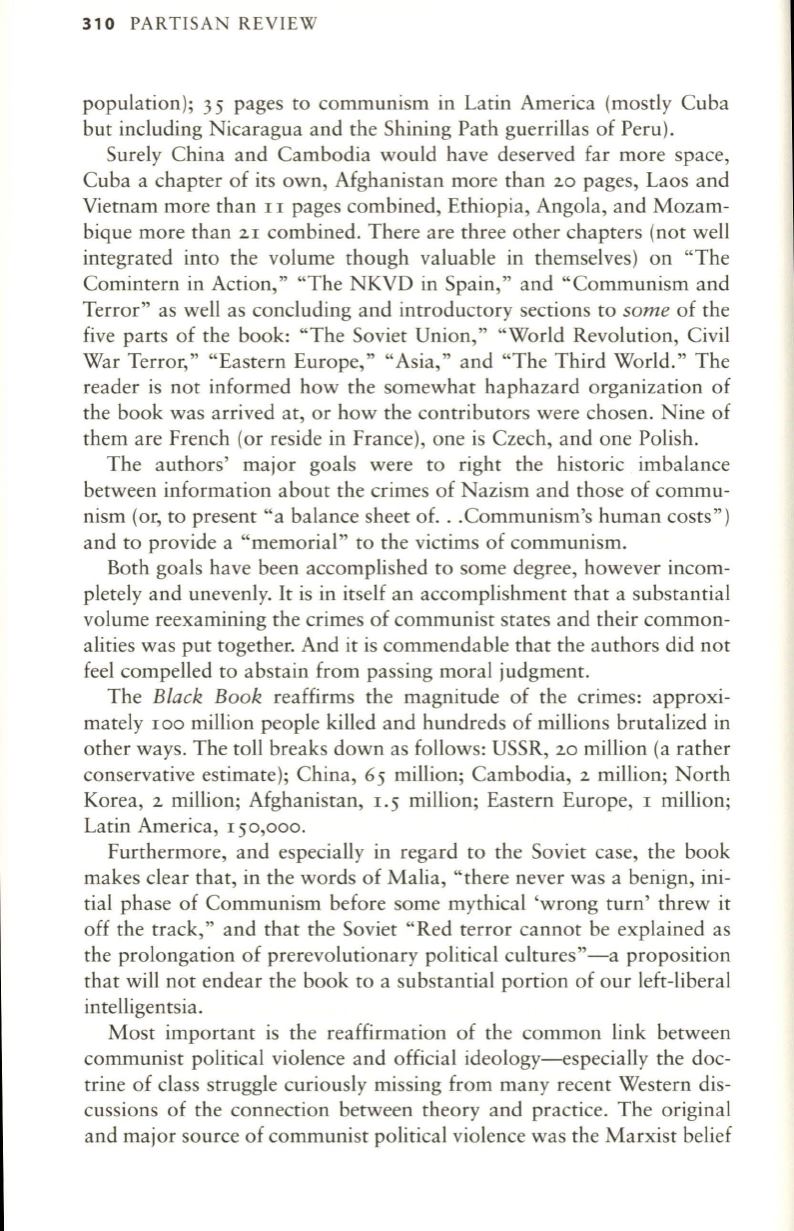
310
PARTISAN REVIEW
population}; 35 pages to communism in Latin America (mostly Cuba
but including Nicaragua and the Shining Path guerrillas of Peru).
Surely China and Cambodia would have deserved far more space,
Cuba a chapter of its own, Afghanistan more than
20
pages, Laos and
Vietnam more than
I I
pages combined, Ethiopia, Angola, and Mozam–
bique more than
21
combined. There are three other chapters (not well
integrated into the volume though valuable in themselves) on "The
Comintern in Action," "The NKVD in Spain," and "Communism and
Terror" as well as concluding and introductory sections to
some
of the
five parts of the book: "The Soviet Union," "World Revolution, Civil
War Terror," "Eastern Europe," "Asia," and "The Third World ." The
reader is not informed how the somewhat haphazard organization of
the book was arrived at, or how the contributors were chosen. Nine of
them are French (or reside in France), one is Czech, and one Polish.
The authors' major goals were to right the historic imbalance
between information about the crimes of Nazism and those of commu–
nism (or, to present "a balance sheet of...Communism's human costs")
and to provide a "memorial" to the victims of communism.
Both goals have been accomplished to some degree, however incom–
pletely and unevenly.
It
is in itself an accomplishment that a substantial
volume reexamining the crimes of communist states and their common–
alities was put together. And it is commendable that the authors did not
feel compelled to abstain from passing moral judgment.
The
Black Book
reaffirms the magnitude of the crimes: approxi–
mately
100
million people killed and hundreds of millions brutalized in
other ways. The toll breaks down as follows: USSR,
20
million (a rather
conservative estimate); China, 65 million; Cambodia,
2
million; North
Korea,
2
million; Afghanistan,
1 . 5
million; Eastern Europe,
I
million;
Latin America,
150,000.
Furthermore, and especially in regard to the Soviet case, the book
makes clear that, in the words of Malia, "there never was a benign, ini–
tial phase of Communism before some mythical 'wrong turn' threw it
off the track," and that the Soviet "Red terror cannot be explained as
the prolongation of prerevolutionary political cultures"-a proposition
that will not endear the book to a substantial portion of our left-liberal
intelligentsia.
Most important is the reaffirmation of the common link between
communist political violence and official ideology-especially the doc–
trine of class struggle curiously missing from many recent Western dis–
cussions of the connection between theory and practice. The original
and major source of communist political violence was the Marxist belief


